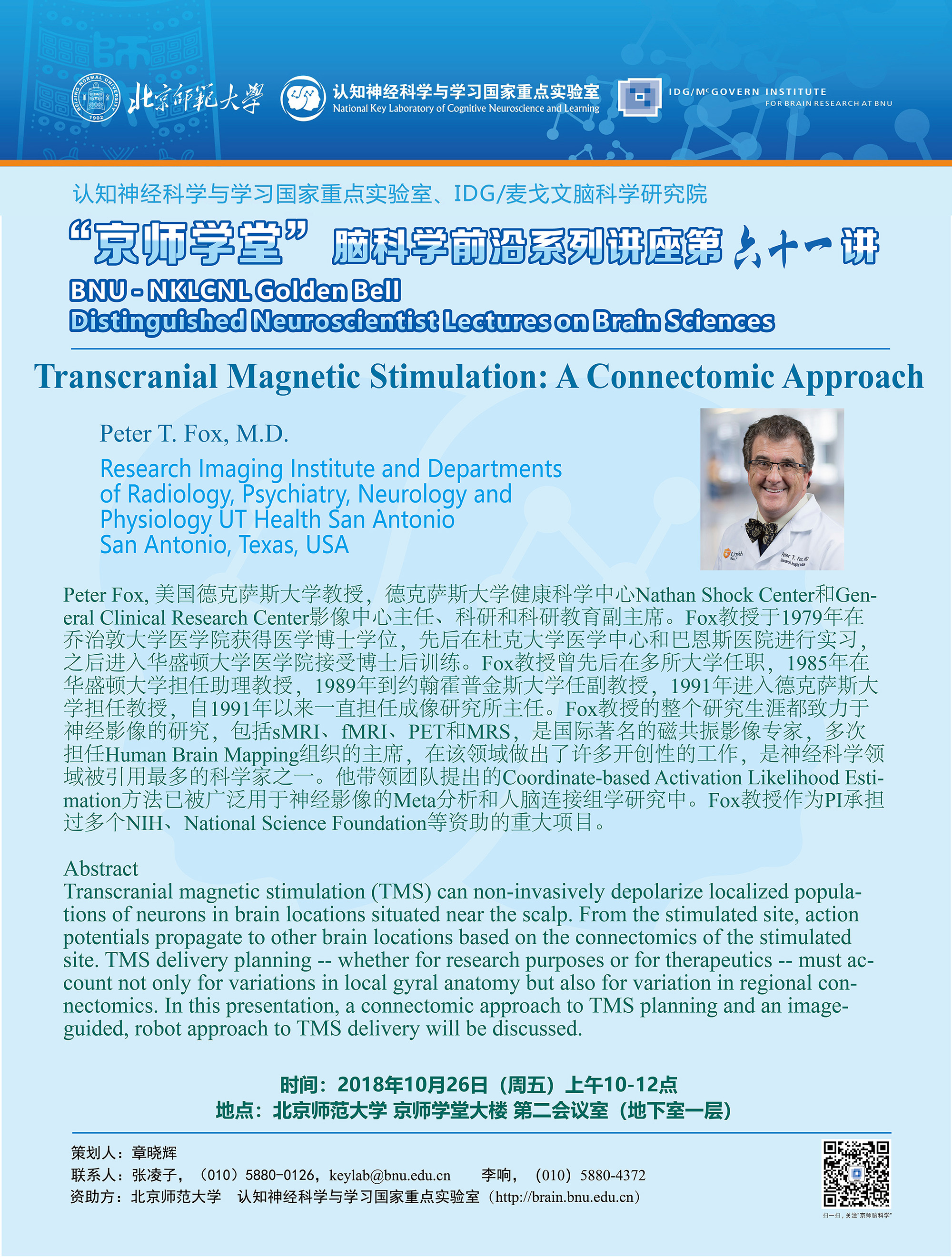Transcranial Magnetic Stimulation: A Connectomic Approach
报告人:Peter T. Fox, M.D.
Research Imaging Institute and Departments of Radiology, Psychiatry, Neurology and Physiology
UT Health San Antonio
报告时间:2018年10月26日 上午10:00-11:00
报告地点:北京师范大学京师学堂第二会议室(地下一层)
报告人简介:
Peter Fox, 美国德克萨斯大学教授,德克萨斯大学健康科学中心Nathan Shock Center和General Clinical Research Center影像中心主任、科研和科研教育副主席。Fox教授于1979年在乔治敦大学医学院获得医学博士学位,先后在杜克大学医学中心和巴恩斯医院进行实习,之后进入华盛顿大学医学院接受博士后训练。Fox教授曾先后在多所大学任职,1985年在华盛顿大学担任助理教授,1989年到约翰霍普金斯大学任副教授,1991年进入德克萨斯大学担任教授,自1991年以来一直担任成像研究所主任。Fox教授的整个研究生涯都致力于神经影像的研究,包括sMRI、fMRI、PET和MRS,是国际著名的磁共振影像专家,多次担任Human Brain Mapping组织的主席,在该领域做出了许多开创性的工作,是神经科学领域被引用最多的科学家之一。他带领团队提出的Coordinate-based Activation Likelihood Estimation方法已被广泛用于神经影像的Meta分析和人脑连接组学研究中。Fox教授作为PI承担过多个NIH、National Science Foundation等资助的重大项目。
报告摘要:
Transcranial magnetic stimulation (TMS) can non-invasively depolarize localized populations of neurons in brain locations situated near the scalp. From the stimulated site, action potentials propagate to other brain locations based on the connectomics of the stimulated site. TMS delivery planning -- whether for research purposes or for therapeutics -- must account not only for variations in local gyral anatomy but also for variation in regional connectomics. In this presentation, a connectomic approach to TMS planning and an image-guided, robot approach to TMS delivery will be discussed.
